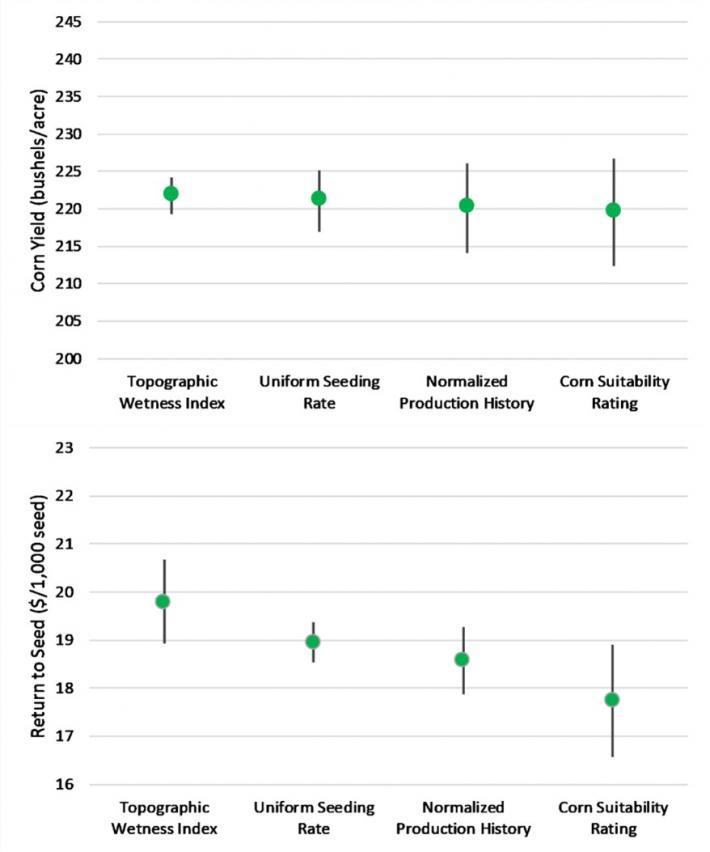Likewise, we know there are other factors that influence yield response to seeding rate. These ‘other factors’ could be soil type, landscape position, soil fertility, production history, weather, or a combination of many factors. It gets complicated really fast! One thing most research trials conclude is that weather may be the biggest influencer of all.
In most situations corn yields will be reduced when seeding rates fall below 27,000 to 30,000 seeds per acre. An additional risk of going to low, is an increase in weed pressure due to more light getting through the sparse canopy. Typically, drought prone areas cannot support high seeding rates because water is the limiting factor. Field areas with high available water holding capacity can typically support high seeding rates except for depressions that have saturated or flooded field conditions where high seeding rates are only beneficial in droughty years. Be careful of increasing seeding rates too much and compromising stalk size, resulting in poor stalk quality or creating too dense a canopy that will increase the risk for some disease pathogens.
Expert judgement comes into play and, when talking about variable rate seeding decisions, the farmer is the expert. Farmers know the fields better than anyone with up to 20, 30, 40 or more years of experience farming some fields.
I continue to have optimism with variable rate seeding, not to increase crop productivity but rather to increase whole field profitability. I do not see variable rate seeding saving seed costs because ultimately there are field areas that can benefit from higher seeding rates and other field areas where lower seeding rates are warranted. Variable rate seeding is going to be most successful on fields with higher amounts of variability.
Here are some simple steps in developing a variable rate seeding plan.
- Identify field variability that can be influenced by changing seeding rates. This may be field areas where an increased seeding rate will support higher yields or where lower seeding rates result in the same yield and greater profitability.
- Develop management zones. Management zones can use vast amounts of spatial data such as production history, soil maps or corn suitability ratings, topography maps, and aerial imagery. When determining management zone assess the source of spatial information being used. Soil maps are likely not accurate enough because they are digitized versions of maps drawn by experts based on landscape and surface soil features. Production history often can be influenced by extreme weather years that should be omitted.
- Include checks in either blocks or strips across the field to understand whether or not the variable rate seeding prescription worked or not. This helps adjust from year to year in an effort to understand and realize how weather is influencing variable rate seeding.
- Farmers’ expert knowledge needs to critique the final variable rate seeding plan on a field-by-field basis. Doing a critique helps ensure management zones match experience and account for all sources of yield variation.

Iowa State University research evaluating four variable rate seeding methodologies from central Iowa in 2018. This trial found all seeding methods had similar average yields however the standard error around the mean yield was much smaller for the topographic wetness and uniform seeding rate methods. Coincidentally, the topographic wetness index has the greatest return to seed. Topographic wetness index considers topography, water flow, and soil water holding capacity. Uniform Seeding Rate was 35,000 seeds per acre. Normalized Production History was the five most recent corn yield maps. Corn Suitability Rating was from the Soil Survey Geographic Database.
Source : iastate.edu